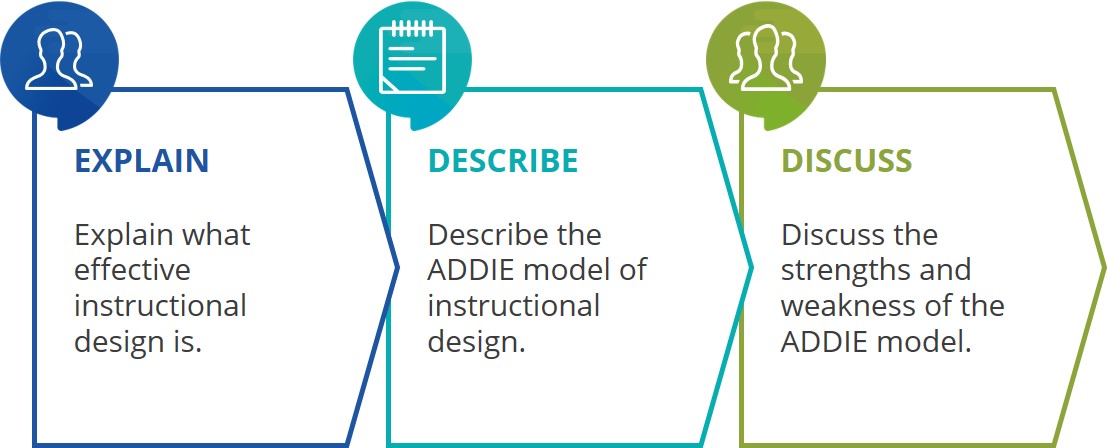Unit 43: Instructional design


Hello colleagues, My name is Lyle Soobramoney and I will be your unit manager for the duration of this course. Please contact me via WhatsApp on 0626193478, if you require any assistance.
Instructional design is basically something you do every time you plan a lesson. You are designing how the instruction will take place. You consider what the objectives of the lesson are, what actions you will take, what actions your learners will take, how you will assess what your learners have learnt and in what sequence all of this is going to happen. One benefit of doing this in a physical classroom is that you can change direction whenever and however you need to based on how your learners respond.
In this unit, however, we are going to consider instructional design for the online environment, where your interaction with learners is more limited and it is harder to change things in the middle of a lesson. For this reason, your planning needs to be more careful and considered.
By the end of this unit, you will be able to:


In this unit, we have explored the ADDIE model as a very useful method for managing and guiding an instructional design process. However, we found that the model was very generic. This means that it can be applied in lots or different situations but it also means that there is a lack of specificity.

Like most things in life, there are pros and cons to the ADDIE model. Your task is to
What is most important is that you are able to evaluate the pros and cons of the model so that you know what its advantages and disadvantages are. Knowing these means that you will be in a better position to use the model in your own instructional design work, especially for online courses.
Pros and Cons of the ADDIE model:

Badges & Points
There is a badge available on completion of the unit's lesson and assignment worth one (1) SACE professional development point.
Attribution:
References:
![]()
This unit on Instructional Design, part of the Teachers' ICT Integration Course by Matthew Goniwe School of Leadership and Governance is licensed under a Creative Commons Attribution-ShareAlike 4.0 International License with the exception of the following resources:
Reeves, T. C., Herrington, J., & Oliver, R. (2002). Authentic activities and online learning. Available here.
Evelyn Pusal. (2009). ADDIE.
J. Clark Gardner. (2011). The ADDIE Analysis Phase.
J. Clark Gardner. (2011). The ADDIE Design Phase.
J. Clark Gardner. (2011). The ADDIE Development Phase.
J. Clark Gardner. (2011). The ADDIE Implementation Phase.
J. Clark Gardner. (2011). The ADDIE Evaluation Phase.
Karin Kirk. (2015). Tips for Designing Online Courses.
Mesa Community College Centre for Teaching and Learning. (2017). Designing an online course.
Katherine Murray. (2011). Five tips for designing effective online learning modules.
TeachThought. (2017). 22 Tips For Better Teaching Online.
All content not licensed under a Creative Commons license is all rights reserved, and you must request permission from the copyright owner to use this material.